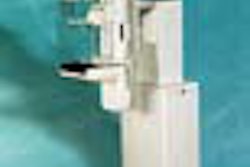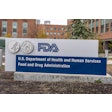Editorial opinion by Michael A. O'Hanlon
When the Nasdaq began to tumble in April 2000, followed by declines in blue chips later in the year, investors throughout the world began to feel the cold sweat of panic. Everyone suspected that most dot-coms were greatly overpriced, but investors wanted to squeeze out the last drop of capital appreciation before selling. Fortunately, the Nasdaq and blue-chip markets are now returning to normality, but many investors, understandably, are nervous and uncertain.
Where, in this huge, variegated economy of ours can investors find shares that reflect reasonable stability? The answer is healthcare. Investor’s Business Daily’s index of medical-outpatient/home care stocks increased almost 50% in 2000, and the S&P HMO Index was up 62%. According to an IBD article published last March, "these gains come against the backdrop of a stock market that seems to plumb new depths nearly every day."
This contrast between high-tech and healthcare stocks reaffirms what many prudent investors have known for some time: technology companies perform cyclically and often miss their growth targets when the economy fails to perform as expected.
Another viewpoint, expressed in a February 4, 2001, Columbus Dispatch article, says that healthcare stocks are a bet on President Bush’s health policies, which businesses consider friendlier to the industry than former Vice President Gore’s.
Whatever the reality, healthcare demand usually tends to remain strong despite economic downturns. How could it be otherwise in the U.S., a nation responsible for approximately 35% of the worldwide market for healthcare products and services and where 14% of our GDP is consumed by healthcare?
The only exception to the healthcare industry’s stability in recent memory occurred during the first Clinton administration, when the president announced a plan to provide guaranteed health insurance for all Americans.
When health reform was first proposed after the election, talk of price controls, and other draconian measures pummeled health-related stocks. I believe that those of us in the healthcare sector realize that the defeat of this proposed legislation benefited the industry and saved the American people from a government-run system that would have denied them the healthcare choices they now enjoy.
Barometers of health
For the third straight year, physicians have purchased more medical practices across the U.S. than hospitals have, according to the 2001 edition of the Goodwill Registry, a national database managed by the Health Care Group. That’s a dramatic change from 1997, when hospitals purchased 46% of sold medical practices, while individual physicians purchased 36%, and group practices bought 10%, the registry revealed.
However, in 1998, hospital purchases dropped to only 28%, while purchases by physicians and group practices rose to 67%. Statistics for 1999 show that 21% of practices were purchased by hospitals, while doctors and group practices bought 76%. In 2000, only 3% of practices were bought by hospitals, with the rest purchased by physicians and groups.
Furthermore, healthcare services stocks have replaced biotechnology as the favorite of Wall Street’s healthcare investors, points out an article in the March 5, 2001, issue of Investment Dealers Digest (IDD).
Such major investment firms as Merrill Lynch, Banc of America Securities, Lehman Brothers, and CIBC World Markets all report having healthcare services underwritings in their pipelines, according to IDD. Peter Cowley, who runs healthcare banking for CIBC, said that specialized medical facilities that treat heart disease and orthopedic ailments are experiencing a growth spurt and will probably seek increased funding during 2001.
Venture capital investments bear out the turn to healthcare among sophisticated investors, according to an article in the California-based Orange County Business Journal (March 19, 2001).
In the fourth quarter of 2000, Orange County medical device makers, biotechnology, and healthcare service companies received $69 million in venture funding, second only to software, according to a PriceWaterhouseCoopers study reported in the paper. However, in the second quarter of 2000, according to the same study, Orange County computer-related companies tallied a record $264.1 million in venture funding, while medical device and other healthcare businesses received only $49 million.
In a December 18, 2000 article, Investor’s Business Daily said the trends favoring healthcare stocks included an aging population, longer life expectancy, and a healthcare system attempting to cut costs by reducing hospital stays and providing these patients with follow-up care at home or at outpatient facilities.
Furthermore, Medicare reversed many of its reimbursement cuts at the end of 2000, although a modest 1.2% increase was imposed this year. Reimbursement is a major factor in the healthcare industry’s stability, providing support during economic downturns.
Private health insurers are expected to do well in 2001, According Todd B. Richter, a healthcare industry analyst with Banc of America Securities, Coventry is expected to be up 39% from last year. Richter also told Comtex newswire that United Health Group will be up 25%, and Health Net up 21% from 2000, just to name a few.
The importance of demographics
Let’s examine this issue of an aging population. It is a fact that people 65 and older spend as much per capita on healthcare as the rest of the population. Those 75 and over spend four times per capita as the rest of the population. It is estimated that over the next 15 years, the 50-plus group will make up 34% of the overall population. Clearly, investors in healthcare stocks have no worries about the demand for their investments’ products: It will always be there.
Americans older than 50 consume three times as many prescription drugs as the rest of the population. That age group, now numbering 75 million, is expected to grow to 85 million by 2005 and to 106 million by 2015, outpacing all other age groups in our society.
Furthermore, as older Americans are generally more affluent than their parents’ generation, they are likely to be covered by a prescription drug plan. They are highly responsive to new drugs designed to boost sex drive, lower cholesterol levels, and otherwise improve their lives, as Madison Avenue knows well.
The aging of the population offers tremendous opportunities for rehabilitation and other outpatient facilities that concentrate on a particular niche, such as kidney dialysis or home-based respiratory services.
These businesses, which range in size from relatively large chains, such as Rehab Group and Linacre Holdings, to small, locally based operations, can usually provide their services more cheaply than hospitals. As a result, and for this reason, many of them work cooperatively with local hospitals and nursing homes. The competition is intense, meaning that these outpatient providers must stress quality services or they will not survive.
Advances in technology spurring outpatient trend
AuntMinnie.com readers are primarily professionals in the imaging sector -- probably the most dynamic sector in healthcare technology, with constantly improving technology and new applications discovered almost on a daily basis. Therefore, it may be useful for readers to consider that, since Medicare was launched in the U.S. in 1965, there has been a virtual explosion of imaging technology.
Before 1965, x-rays, ECGs, blood tests, and sometimes risky explorative surgeries were the only tools in physicians’ diagnostic toolkits. Today, we have CT, MRI, ultrasound, nuclear medicine, and fiber-optic technologies as standard equipment in our hospitals and outpatient clinics.
The result has been not only a vastly improved capability for accurate and timely diagnosis, but a dramatic decline in invasive diagnostic surgery. This explosion would not have been possible without the guaranteed reimbursement policies adopted by governments and private healthcare insurers.
A major factor in enabling smaller outpatient providers to compete head-on with large chain operations is the dramatic increase in technology that providers have at their disposal. For instance, a small firm can have access to patient data as quickly and comprehensively as a national firm through advances in information technology.
The processing of transactions and automated billing systems, or the outsourcing of these tasks, can put smaller providers on a level playing field with their larger competitors. And one of the greatest technological advances benefiting all providers is telemedicine, which enables providers to monitor their patients online.
In closing, I'd like to reiterate that healthcare is not only a noncyclical growth industry used by everyone in the world at some time, but, in the U.S., an industry whose innovations and technological advances are propelled from within by the combined government-private health insurance financial structure that sustains the system.
Michael A. O’Hanlon is president and CEO of DVI, Inc., a financial services company in Jamison, PA, that specializes in financing international high-technology medical equipment.
Related Reading
WHO report presents a skewed view of world healthcare, July 18, 2000
June 20, 2001
The opinions expressed in guest editorials are those of the author, and do not necessarily reflect the views of AuntMinnie.com.
Copyright © 2001 AuntMinnie.com



















